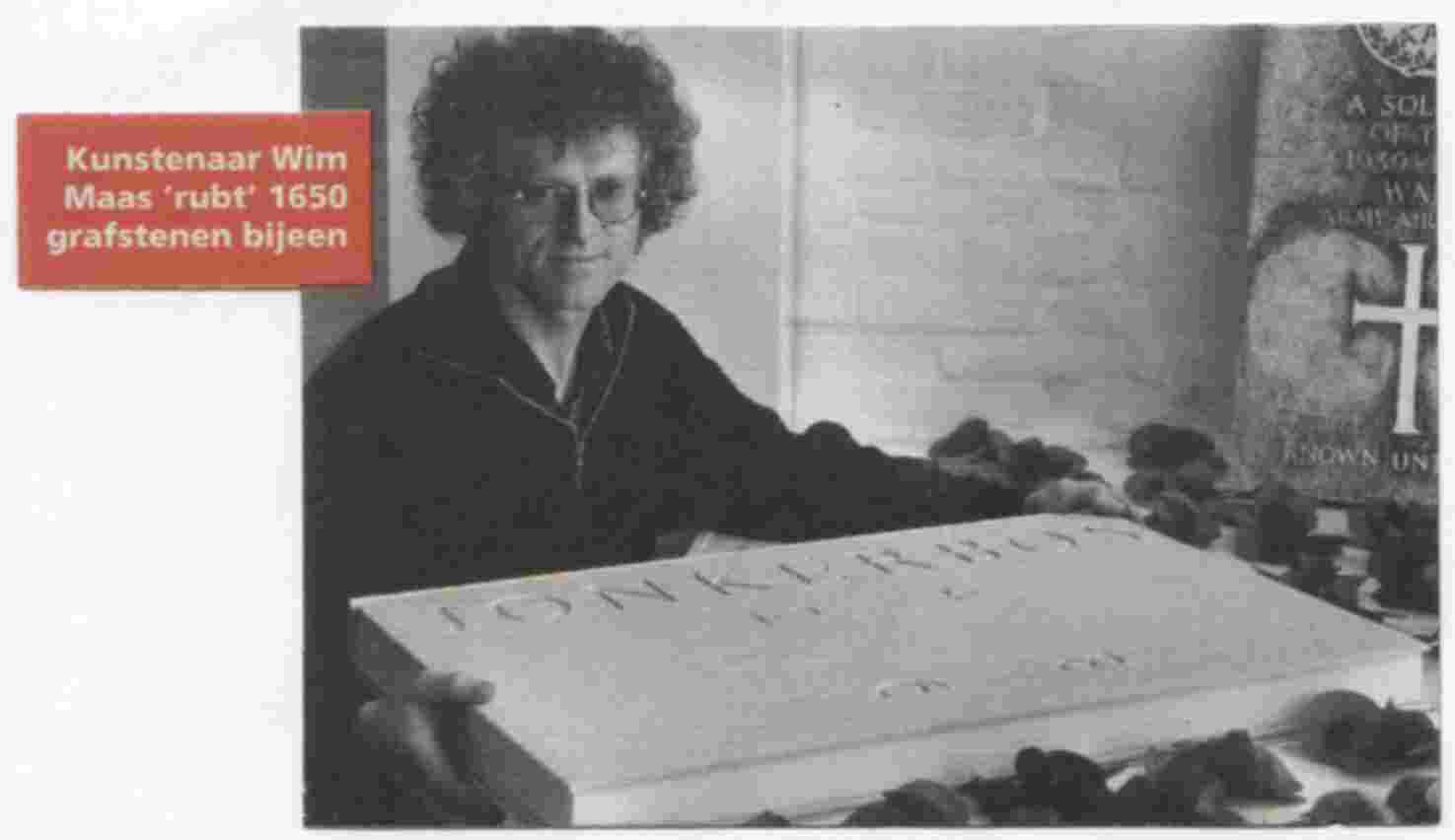
Nijmegen - "Everybody can get a feeling for it for one reason or another. For me it is about art, because I choose very consciously to create the feeling of close contact with the fallen soldiers." This is how the artist from Brakkenstein, Wim Maas (1949), looks back at his work of four years in which he collected 1,650 headstones from the cemetery Jonkerbosch, Nijmegen, in six memorial books. As from Sunday his 'Project Jonkerbosch' will be exhibited in Galerie De Natris, in the heart of Bottendaal.
About five years ago the former art teacher Wim Maas had the idea to trace the headstones of his parents grave using graphite onto a large sheet of paper. This produced his first private memorial. "This way I could - so to speak - bring the memory of my parents closer to home again."
What is possible on a small scale can also be achieved on a larger scale. There are 1,635 soldiers from the Commonwealth Countries (England and the ex colonies Canada, Australia and New Zealand), who fought for the freedom of Europe and fell in the war, buried in Nijmegen.
By law the remains had to be buried in the countries where they died. Their relatives had to come to The Netherlands in order to remember their beloved sons, brothers or husbands. Now, more than half a century later, there are many English people who have never had the chance to do this. The initiative of Wim Maas makes it possible to still have a memorial.
Day after day, for four years, you could find Maas on the field of honour at the Oude
Mollenhutseweg. Thanks to the rubbing/tracing technique - which is very popular in England - he traced to scale all of the military gravestones on paper and bound them in six commemorative books.
For this project he received co-operation from the Commonwealth War Graves Commission, which looks after all of the British War Cemeteries in Europe. During his daily labour many visitors to the cemetery spoke of their appreciation for the growing artwork.
The Project Jonkerbosch in Gallery de Natris (Van Dulckenstraat 20) consist of pedestals with the six commemorative volumes placed amongst a sea of red poppies; the traditional British commemoration flower. Moving epitaphs and popular music from the 1940s' accompany the memorial to the fallen soldiers.
The exhibition opens on Sunday 13 April at 15.00pm and each Sunday after that until 18 May between 13.00 and 18.00pm and is free of charge (Also by appointment, telephone 024-3234689).
After the exhibition Wim Maas hopes that his heartfelt work will find a home in England.